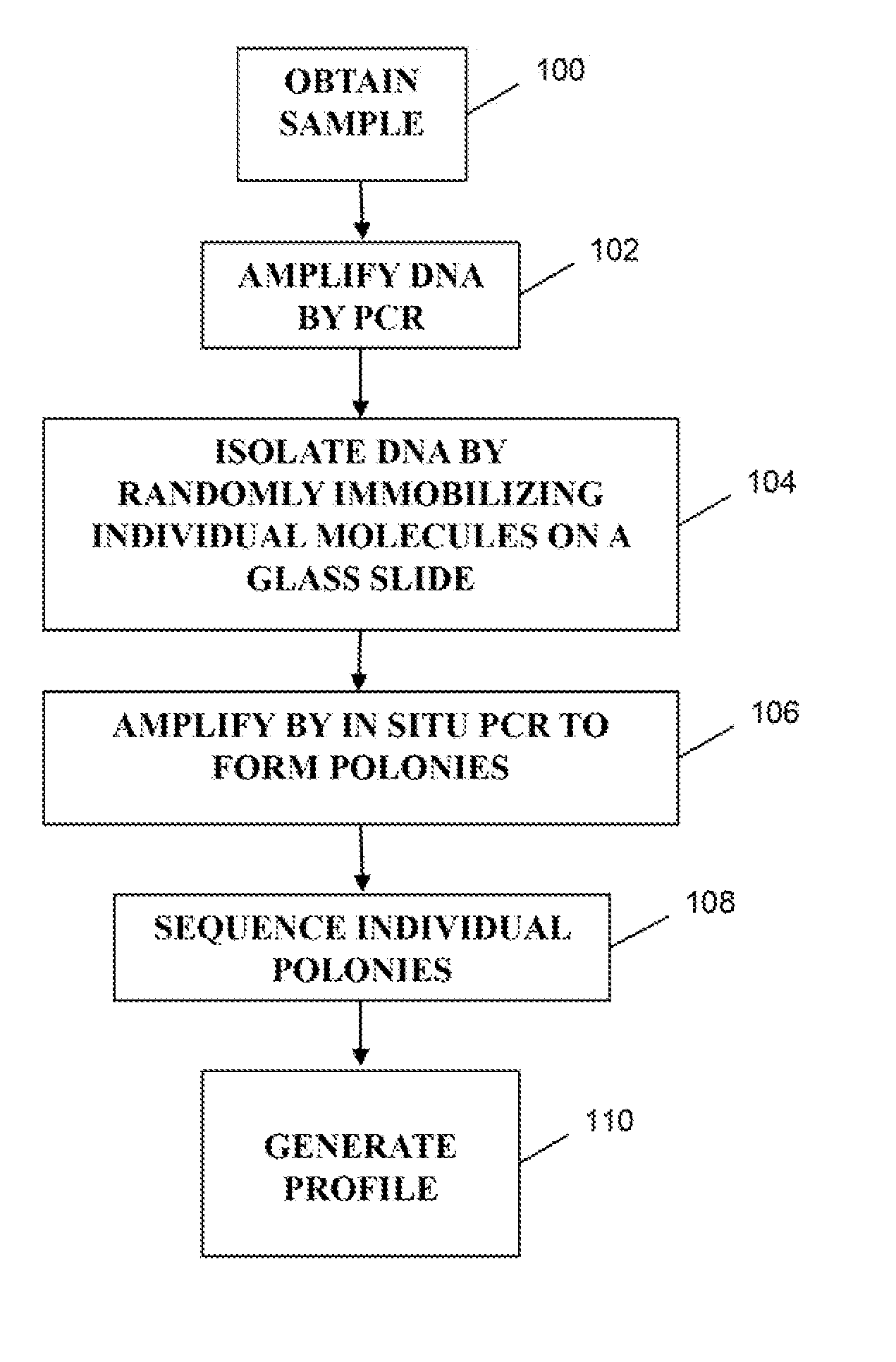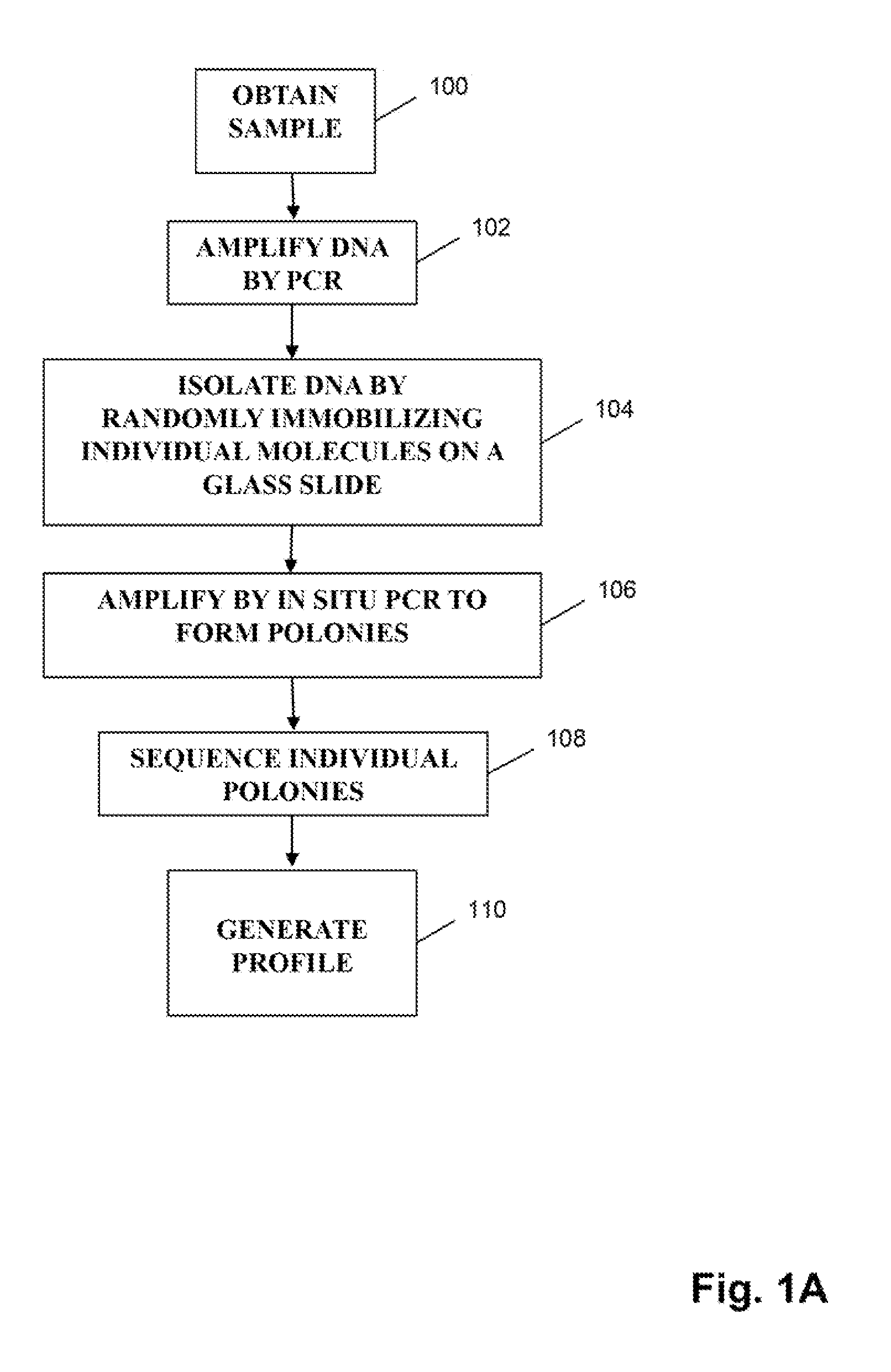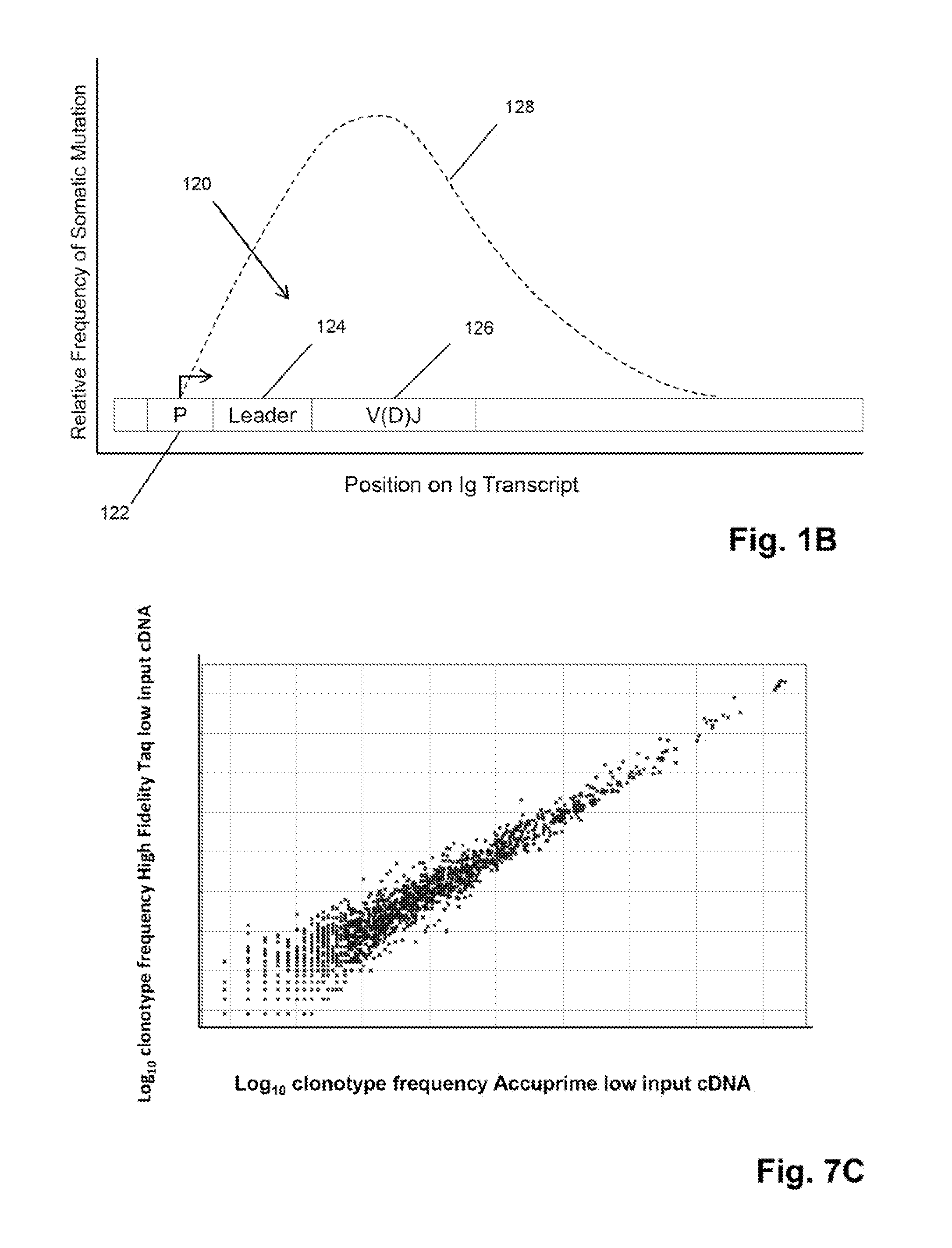Monitoring health and disease status using clonotype profiles
a technology of clonotypes and profiles, applied in the direction of microbiological testing/measurement, biochemistry apparatus and processes, etc., can solve the problems of lack of sensitivity, invasive methods (bone marrow), cost and radiation risk, etc., and achieve the effect of greater sensitivity clonotypes
- Summary
- Abstract
- Description
- Claims
- Application Information
AI Technical Summary
Benefits of technology
Problems solved by technology
Method used
Image
Examples
example 1
Determining the State of an Autoimmune Disease
[0304]A sample of cerebral spinal fluid (CSF) and blood is taken from a patient with an episode peak of multiple sclerosis. CD4+ cells are isolated from the CSF and blood, and the CDR3 of the T cell receptor β gene is amplified by PCR. The amplified fragments are further amplified to add bridge amplification primer binding sites and sequencing primer binding sites for Solexa sequencing. The variable regions of the T cell receptor β gene are sequenced to identify the clonotypes. The sequence information is used to generate a clonotype profile for the patient.
[0305]Another blood sample is taken when the patient is at a relatively inactive state of multiple sclerosis. The same procedure as above is repeated to generate a clonotype-profile. Pathological clonotypes are identified as those that are high at the peak episode and went down significantly at the inactive state. Another blood sample is taken from the patient at a later state. At thi...
example 2
TCRβ Repertoire Analysis
Amplification and Sequencing Strategy
[0306]In this example, TCRβ chains are analyzed. The analysis includes amplification, sequencing, and analyzing the TCRβ sequences. One primer AGCGACCTCGGGTGGGAACA (SEQ ID NO: 1) is complementary to a common sequence in Cβ1 and Cβ2, and there are 34 V primers (Table 1) capable of amplifying all 48 V segments. Cβ1 or Cβ2 differ from each other at position 10 and 14 from the J / C junction. The primer for Cβ1 and Cβ2 ends at position 16 bp and has no preference for Cβ1 or Cβ2.
[0307]The 34 V primers are modified from an original set of primers disclosed in Van Dongen et al, U.S. patent publication 2006 / 0234234, which is incorporated herein by reference.
TABLE 1Primer sequences complementary to the different V families.V segment familyPrimer SequenceSEQ ID NOV20-1AACTATGTTTTGGTATCGTCAGT2V29-1TTCTGGTACCGTCAGCAAC3V9, 5-1, 5-6, 5-5, 5-8, 5-4AAGTGTATCCTGGTACCAACAG4V9, 5-1, 5-6, 5-5, 5-8, 5-4BAGTGTGTACTGGTACCAACAG5V9, 5-1, 5-6, 5-5, 5...
example 3
IgH Repertoire Analysis
Amplification and Sequencing Strategy
[0317]In this example, three primers are used to amplify V regions of IgH molecules. Preferably, the primers are in regions avoiding the CDRs, which have the highest frequency of somatic mutations. Three different amplification reactions are performed. In each reaction, each of the V segments is amplified by one of the three primers and all will use the same C segment primers. The primers in each of the separate reactions are approximately the same distance from the V-D joint and different distances with respect to the primers in different reactions, so that the primers of the three reactions are spaced apart along the V segment. Assuming the last position of the V segment as 0, then the first set of primers (frame A) have the 3′ end at approximately −255. the second set (frame B) have the 3′ end at approximately −160, and the third set (frame C) have the 3′ end at approximately −30. Given the homology between several V seg...
PUM
| Property | Measurement | Unit |
|---|---|---|
| frequency | aaaaa | aaaaa |
| frequencies | aaaaa | aaaaa |
| lengths | aaaaa | aaaaa |
Abstract
Description
Claims
Application Information
 Login to View More
Login to View More - R&D
- Intellectual Property
- Life Sciences
- Materials
- Tech Scout
- Unparalleled Data Quality
- Higher Quality Content
- 60% Fewer Hallucinations
Browse by: Latest US Patents, China's latest patents, Technical Efficacy Thesaurus, Application Domain, Technology Topic, Popular Technical Reports.
© 2025 PatSnap. All rights reserved.Legal|Privacy policy|Modern Slavery Act Transparency Statement|Sitemap|About US| Contact US: help@patsnap.com



